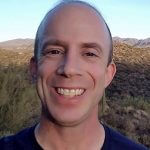Saturday marks the 250th anniversary of the beginning of the American Revolutionary War with the “shot heard ’round the world” on Lexington Green in Massachusetts on April 19, 1775.
The conflict between Great Britain and her 13 American colonies had been brewing for some time.
Americans viewed themselves as British citizens, and therefore entitled to all the rights that entails, including the exclusive authority to impose taxes through their own legislative bodies.
The Magna Carta, dating back to 1215, recognized the principle of no taxation without representation.
But in 1765, Parliament passed the Stamp Act, which placed a tax on all official documents like court papers and deeds but also included taxes on everyday items like newspapers and playing cards. If Parliament was going to make these kinds of unilateral, unprecedented decisions, the colonists thought, it did not bode well for their liberty.
Nine of the 13 colonies later that year met together in a joint Stamp Act Congress and adopted measures in opposition to the levies.
The strong reaction throughout the colonies caused Parliament to repeal the tax only four months after it came into effect; however, when Parliament announced its nullification within the Declaratory Act (1766), that body stated that it retained “full power and authority to make laws and statutes of sufficient force and validity to bind the colonies and people of America … in all cases whatsoever.
This wording left many colonists believing that, though they may have just won this battle against the unjust exercise of parliamentary authority, they would lose the war if the act’s language were accepted.
Events started to come to a head when Parliament passed the Coercive Acts of 1774, which empowered the British Fleet to blockade Boston Harbor and the Redcoat army to occupy the city and impose martial law in response to the Boston Tea Party.
Are you a fan of US history?
“British troops began to fortify Boston, and seized ammunition belonging to the colony of Massachusetts. Thousands of American militiamen were ready to resist, but no fighting occurred,” according to the Library of Congress.
“Massachusetts created a Provincial Congress, and a special Committee of Safety to decide when the militia should be called into action. Special groups of militia, known as Minute Men, were organized to be ready for instant action.”
And that action occurred beginning on the night of April 18th, 1775, when Paul Revere made his famous ride to warn the citizens of Massachusetts that the British were marching from Boston to Concord to seize the colonists’ gunpowder stores.
Shortly after dawn, 77 local militia confronted the lead elements of 700 Redcoats on Lexington Green, blocking their way to Concord.
After a standoff lasting a few moments, a musket shot was fired: no one was sure afterwards from which side. It did not matter; a great volley of musket fire then ensued.
“The shot heard ’round the world” launched the American Revolution.
The Redcoats were able to push their way through the militia and march on to Concord, but when they arrived, they found most of the weapons and gunpowder had already been removed by the colonists.
Soon, the British were met outside of town by over 400 Militiamen and ultimately chose to retreat back to Boston, being attacked by American forces all along the way.
Two months later, the Redcoats and local militia clashed again at the Battle of Bunker Hill in Boston, June 17, 1775. The militia comported themselves well, but finally had to retreat due to lack of ammunition.
At this time, the Second Continental Congress was in session in Philadelphia and unanimously selected Virginia’s George Washington as the Continental Army’s commander in chief.
Today in 1775, George Washington rode out in front of the American troops gathered at Cambridge Common, formally taking command of the Continental Army.
Congress had appointed Washington commander in chief two weeks prior, instructing him to take charge of the Siege of Boston. pic.twitter.com/ec7XLY5T5Z
— Old North (@OldNorth1723) July 3, 2023
He would travel to Boston and take command on July 3, 1775, and through many battles, ultimately lead the Americans to victory at Yorktown, Virginia, in October 1781.
Portions of this article first appeared in the book “We Hold These Truths” by Randall Norman DeSoto.
Advertise with The Western Journal and reach millions of highly engaged readers, while supporting our work. Advertise Today.








